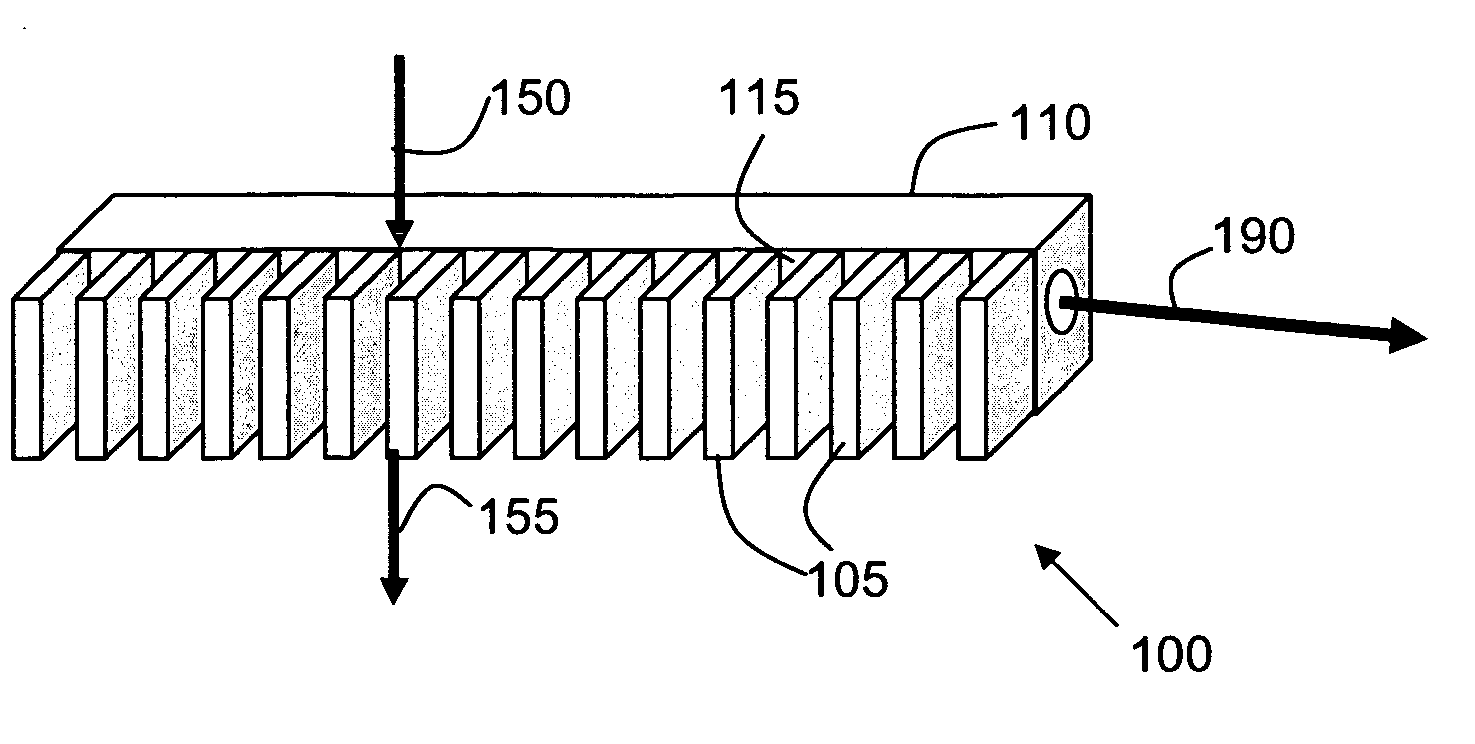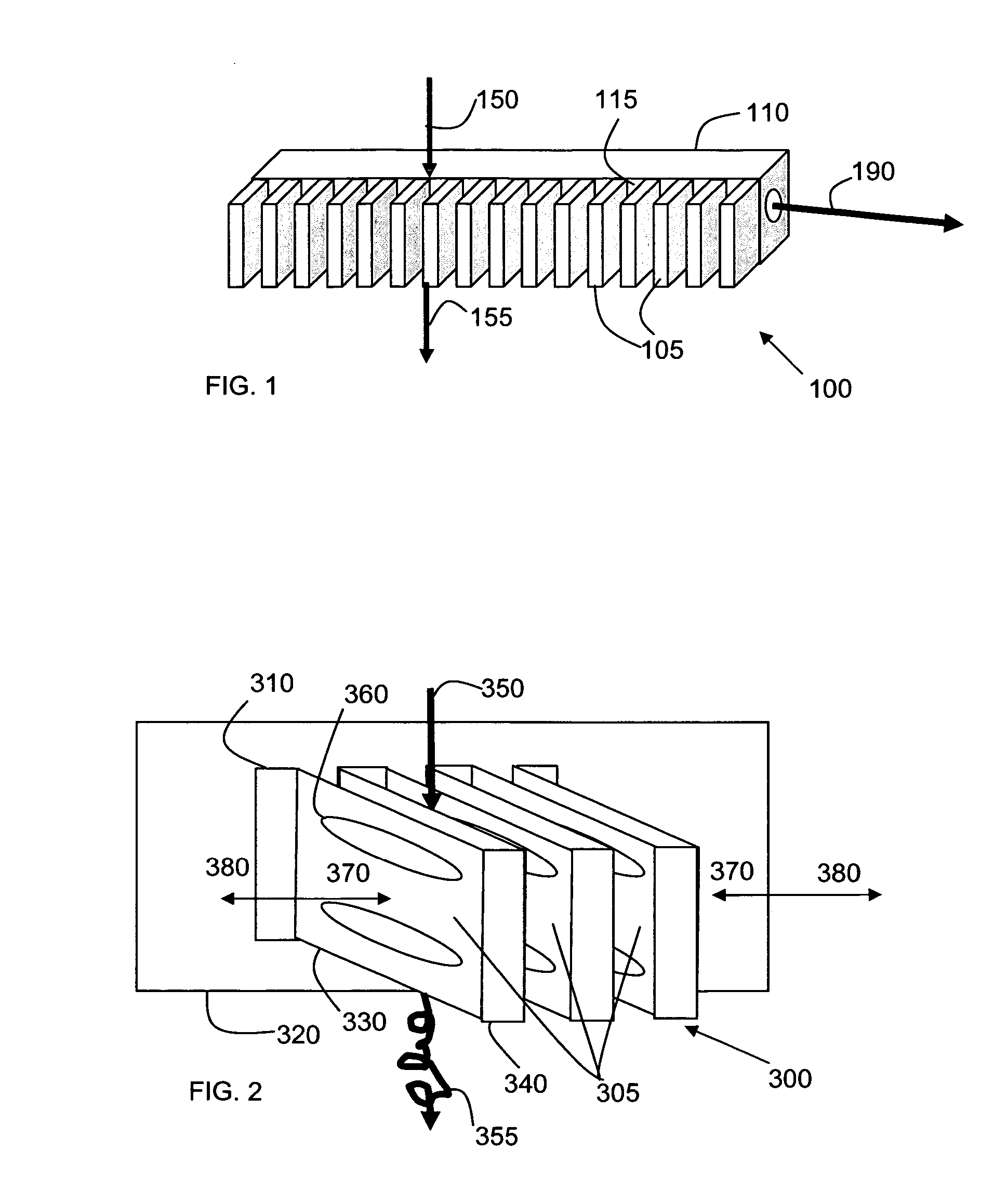Laser cooling system and method
a cooling system and laser technology, applied in the field of lasers, can solve the problems of significant turbulence, increased cost, and more difficult work
- Summary
- Abstract
- Description
- Claims
- Application Information
AI Technical Summary
Benefits of technology
Problems solved by technology
Method used
Image
Examples
Embodiment Construction
[0023] The following description of exemplary embodiment(s) is merely illustrative in nature and is in no way intended to limit the invention, its application, or uses.
[0024] Although the discussion herein may not discuss all details associated with the cooling of laser systems, such details, as known by one of ordinary skill, are intended to be included within the scope of embodiments discussed herein.
[0025] Fluid cooling of a laser system (e.g. air, gas, water, and other fluids as can be used as determined by one of ordinary skill), can involved flowing the fluid over a fin array, where the fin array conducts heat from the laser. The heated fin array in turn heats the flowing fluid, which convects the heat away from the fin array. The heated portion of the fluid flow depends upon the area of the fin array, the thermal transfer efficiency between the fins and the cooling fluid, and the volume of the fluid passing over the fin array. Laminar fluid flow has a lower heat transfer co...
PUM
 Login to View More
Login to View More Abstract
Description
Claims
Application Information
 Login to View More
Login to View More - R&D
- Intellectual Property
- Life Sciences
- Materials
- Tech Scout
- Unparalleled Data Quality
- Higher Quality Content
- 60% Fewer Hallucinations
Browse by: Latest US Patents, China's latest patents, Technical Efficacy Thesaurus, Application Domain, Technology Topic, Popular Technical Reports.
© 2025 PatSnap. All rights reserved.Legal|Privacy policy|Modern Slavery Act Transparency Statement|Sitemap|About US| Contact US: help@patsnap.com



